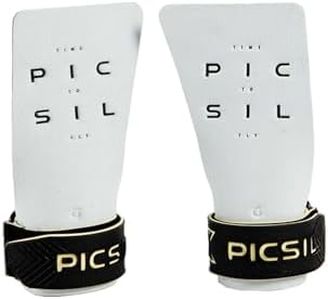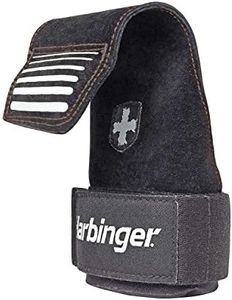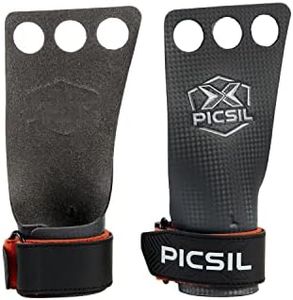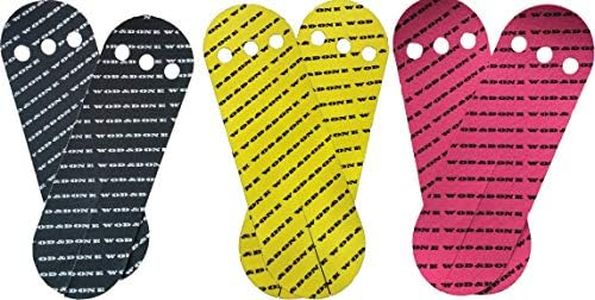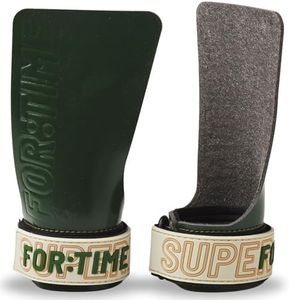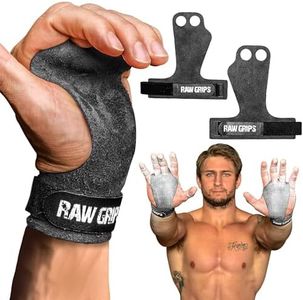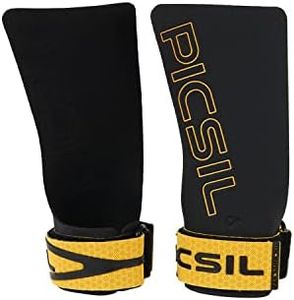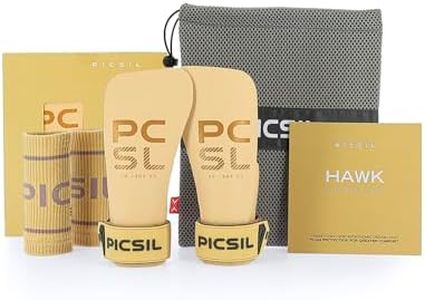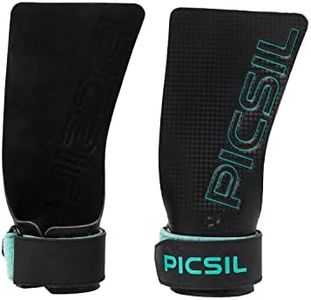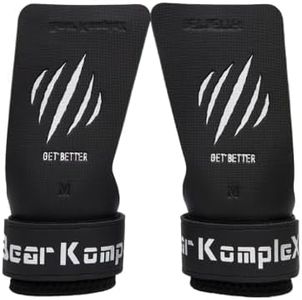We Use CookiesWe use cookies to enhance the security, performance,
functionality and for analytical and promotional activities. By continuing to browse this site you
are agreeing to our privacy policy
10 Best Gymnastic Grips For Crossfit
From leading brands and best sellers available on the web.Buying Guide for the Best Gymnastic Grips For Crossfit
When selecting gymnastic grips for CrossFit, your goal is to find the right balance between protection, comfort, and performance. Grips help protect your hands from developing painful tears and calluses while allowing you to maintain a strong hold on bars during high-volume workouts. Since CrossFit often switches quickly between different movements, it's important to choose grips that are easy to adjust and won't slow you down. Consider how and where you'll use them most, and make sure the style and features match your training needs.MaterialThe material of gymnastic grips determines their durability, grip, comfort, and how quickly they break in. Leather is known for being tough and long-lasting; it provides a firm hold and molds to your hand over time but can feel stiff at first. Synthetic or composite materials tend to be softer from the start, lighter in weight, and dry faster, which suits those who sweat a lot or need a grip that feels less bulky. When choosing, think about the type of feel you prefer—firmer and more structured, or softer and lighter—and whether you want a grip that takes time to mold to your hand or is ready to go immediately.
Grip ThicknessThickness relates to how much padding is between your hand and the bar. Thinner grips allow for a more 'bare hand' feel, giving lots of control and feedback from the bar, but may provide less protection against blisters and tears. Thicker grips offer more cushioning for extended workouts but can slightly reduce your tactile sense and make the bar feel a bit thicker in your grip. Your choice should be based on whether you prioritize feeling close to the bar (thin) or maximum hand protection (thick), with many athletes in high-volume environments opting for something in the middle.
Finger Holes vs. FingerlessSome grips have holes for your fingers (usually two or three), which keep the grip in place, while others are fingerless and simply lay over your palm and the bar. Finger-hole grips feel more secure and don't shift around, great if you do a lot of bar work or need to transition quickly. However, fingerless grips can be removed or adjusted quickly and let you slide your hand out as needed, which is useful for frequent workout transitions. Your pick should depend on your comfort with either style and how quickly you need to transition between movements.
Wrist Strap DesignThe way a grip secures around your wrist affects comfort and stability. Basic Velcro straps are easy to take on and off, and usually fit most wrists well, while more advanced options may have extra padding or secure with metal buckles for increased support. Consider how comfortable the wrist strap feels during longer sessions and whether it stays put during rapid movement—the right wrist support will depend on your wrist size and sensitivity, as well as your preference for ease of adjustment.
Coverage AreaGrip coverage refers to how much of your palm is protected. Some models cover just the central part of your palm, while others are longer and also shield your fingers and even part of your wrist. Larger coverage protects more skin but can feel bulkier and may need getting used to. Smaller grips are less intrusive but may not shield high-wear areas for certain movements. Think about which areas of your hands tend to blister or tear most and match grip size to your typical pain points.
Ease of Use and VersatilityGrips are often worn during various types of exercises in CrossFit; sometimes you’ll need to take them off or adjust them quickly. Look for ease of slipping the grip on and off, and whether they get in the way during exercises not involving the pull-up bar or rings. If your workouts require frequent transitions between grip-based and grip-free movements, a more flexible, easy on/off design may plan well into your routine.
